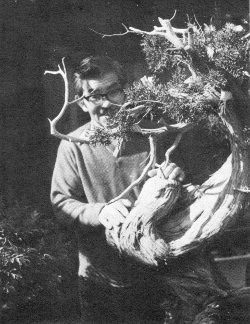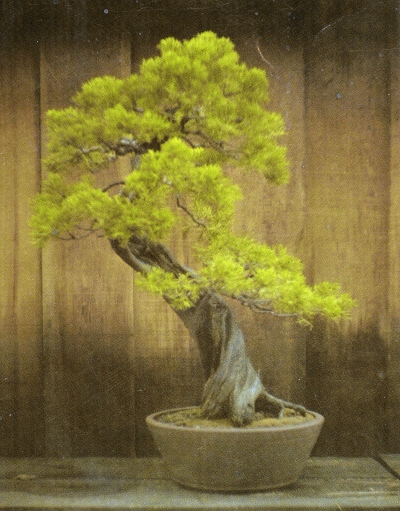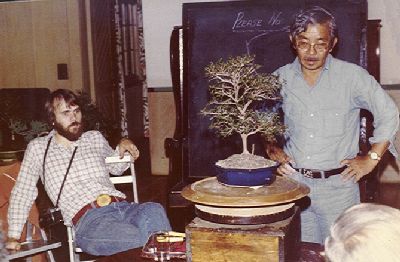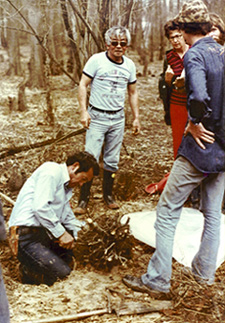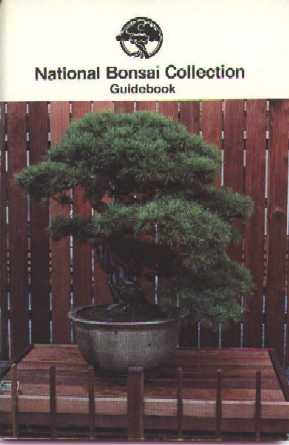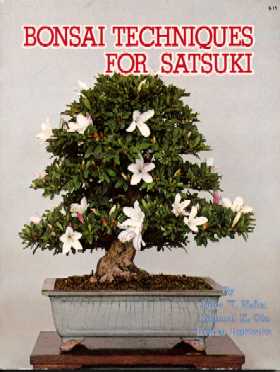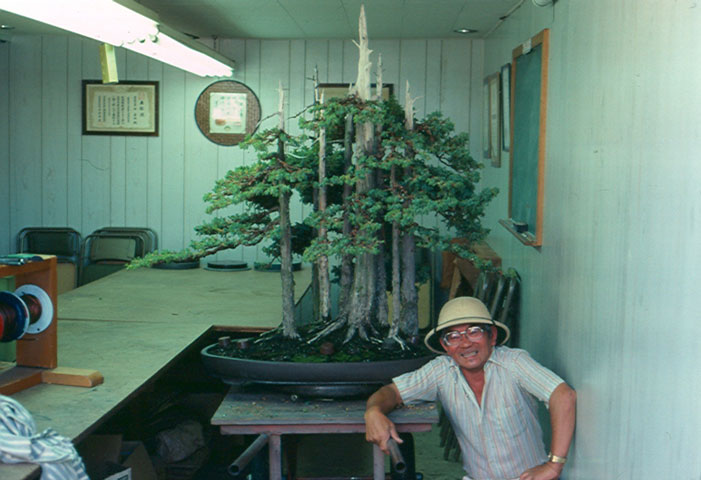|
From April 10 through 12, 1970, the American Bonsai Society (ABS) Symposium
was held in Dallas, TX and speaker John Naka was so well-received that
he was invited to next year's event in July in Norfolk, VA. A photo-article
"Magic With Naka" in the Spring 1970 issue of the Bonsai Journal
preserved the step-by-step transformation of a nursery-grown juniper; the
Fall 1971 issue had both a cover photograph and illustrated story of "The
Forest That Grew in Norfolk." Nine large nursery-grown junipers were
transformed in the latter demonstration.
In 1971 (and again in 1973), John gave lecture-demonstrations on Channel 23 "Garden Master" TV show. He was a guest of Pensacola, Florida botanist, Dr. William Benette. 14And this year saw the first of the tours John Naka conducted to that land. (Others would be made in 1973, 1977, 1978, 1979, 1981, 1983, 1985 and 1992). Upon returning from these trips, John would immediately try out a new technique or two in front of his students at previously scheduled workshops. The new Japanese techniques would then be disseminated further. Other teachers returning from travels similarly shared their knowledge and continue to develop this living artform. Beginning with the February issue, BCI's Bonsai Magazine included for a while haiku or senryu penned by John and translated into English by Davina Kosh. The 5-7-5 syllable forms of Japanese verse -- haiku traditionally must have a seasonal word and limit itself to real things registered by the senses, while senryu includes intangibles such as a sense of humor, feelings and thoughts directly -- have been penned by John while he continues to study with a recognized Teacher of the forms. John regularly enters his poetry for contests in the Los Angeles Area Japanese publication. A line drawing by Naka-san accompanied each piece in Bonsai Magazine. 15
Early in 1972, John gave a special free
demonstation and lecture for the New York club, which was then followed
by a workshop to put into practice those things learned. For the
Boston area Northeast club, John picked out 10 different plants for
which each member was given a sketch of John's to go by in working up
that style. One photographer was retained to record the Naka
demonstration; and others were not permitted so as to reduce the
interference with John and with the members' view. Slides and colored
prints were made available to all afterward. John also conducted
workshops for the Pennsylvania club in the Philadelphia area.
For the second consecutive year a joint BCI-ABS convention was held, this time in July 1973 in Atlanta, GA. The theme was "Growing Together." John Naka was one of the guest demonstrators for the 503 delegates -- who gave him a standing ovation after Khan Komai's introduction. John worked on a large 200 year old California juniper which had been dug from the side of a mountain two and a half years earlier. He was assisted with this driftwood style by Ben Oki and Frank Goya.
John also gave a lecture-demonstration on Channel 4 KABC "Expressions East/West" for the episode "Bonsai -- Nature's Echo." Longwood Gardens, near Kennett Square, PA, purchased a Juniperus californica from John for their collection. Found in the mountains of California and severely stunted by the environment, this oldest specimen in their collection was estimated to be about four hundred years old. John's juniper forest Goshin was increased to eleven trees -- "one for each of my grandchildren" -- in a 32" long container this year. 17 The year also saw the first edition of his excellent work, Bonsai Techniques, which grew out of a much smaller "Bonsai Mimeograph For Beginners Class" pamphlet. He borrowed $30,000 against his home to self-publish this book and it was so successful that it provided an annuity to him and his family. It contains five hundred b&w photos and illustrations and sixteen color plates which depict all aspects of the art. While photo reproduction improved in later books, Bonsai Techniques continues to be a treasured resource. Only a bare handful of the books issued before this time have proven their durability, remaining useful additions to an enthusiast's library. Many of the others, especially in the U.S., were "practice" books by devoted amateurs who had only a few years' worth of experience. Pictures of their trees-in-training were not terribly educational, and these books are now of historical value only. A photograph of a 27"H bonsai styled by John (below) was the first color cover of BCI's Bonsai Magazine in December. Dug in late October 1956 this 7-1/2" diameter trunk beauty was one of John's first collected California junipers.
John Naka was both a demonstrator and the master of ceremonies for the joint BCI-ABS Convention held in
Pasadena, CA in July 1974 at the historic Huntington-Sherman Hotel. Two forest plantings -- one with
23 Juniper foemina specimens -- were by him, in between problem-solving and allowing enthusiasts to see his
personal collection of trees at his home. The exhibit of bonsai by the California club was assembled
by Frank Goya in the Wentworth Room at the Hotel and it became a central meeting place. The exhibit
was acclaimed by the visiting conventioneers from all over the United States, as well as from Australia,
Canada, and Japan.
18
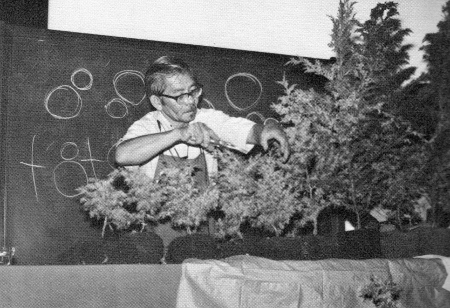
"The blackboard shows the possible relation of the principal tree with the second tree."
(Juyne M. Tayson, M.D. (ed), International Bonsai Digest Bonsai Gems, Fall 1974, pg. 89) |
